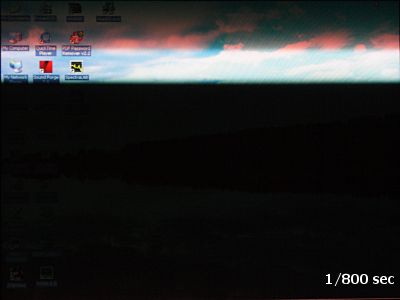
 |
|
|
#1 |
|
Registered User
Join Date: May 2006
Location: France
Age: 48
Posts: 211
|
Interlaced vs Non-Interlaced display
Hello,
In interlaced modes, there are up to 625 lines (some serve for sync, but basically it is 625*64µs) represented as two 312,5 lines fields which interlace In non-interlaced computer display like Amiga, every field is identical and has only 312 lines, which results in 50fps of 312 lines. As the whole screen's height is covered in 1/50 of a second, it means: 1/ Each line has twice the height of interlaced lines or 2/ There is only one and always the same field displayed every 1/50 of a second with a blank interline between scanlines. I think 1/ is right, but I haven't seen it writen anywhere. Can someone tell about it? If 1/ is right this means the electron beam is made twice as wide in non interlaced mode than in interlaced mode. |
|
|
|
|
#2 |
|
Thalion Webshrine
Join Date: Jan 2004
Location: Oxford
Posts: 14,432
|
The answer for old CRT was 2
|
|
|
|
|
#3 |
|
Registered User
Join Date: May 2006
Location: France
Age: 48
Posts: 211
|
OK, what you mean by "old CRT". A PAL/SECAM TV from 2004 is an "old CRT"?
So on an old CRT, switching from interlaced to non-interlaced mode should result in loss of brightness because 50% of the display is made of black lines... |
|
|
|
|
#4 | ||
|
Registered User
Join Date: Mar 2008
Location: US
Posts: 318
|
Quote:
Quote:
|
||
|
|
|
|
#5 |
|
WinUAE developer
Join Date: Aug 2001
Location: Hämeenlinna/Finland
Age: 49
Posts: 26,546
|
There is no noticeable brightness change.
Non-black lines are now refreshed 2 times faster (50/second instead of normal 25/second), which makes brighter display because phosphor's brightness has less time to decay. btw, normal PAL non-laced has 313 lines. ("long field" mode). |
|
|
|
|
#6 |
|
Registered User
Join Date: Jan 2012
Location: USA
Posts: 372
|
Phosphors decay too quickly for there to be much difference in brightness (though non-interlace has always looked brighter to me for some reason -- perhaps it has something to due with flicker fusion).

|
|
|
|
|
#7 |
|
WinUAE developer
Join Date: Aug 2001
Location: Hämeenlinna/Finland
Age: 49
Posts: 26,546
|
Ah, of course, it has to decay quickly or it would create motion blur and CRTs don't have it.
Better explanation: both modes have same number of lines drawn/field = at least average brightness stays the same. |
|
|
|
|
#8 | ||
|
Registered User
Join Date: Jun 2010
Location: PL?
Posts: 2,859
|
Quote:
Older CRT's are with different type of phosphor where afterglow is significantly longer than in newer CRT's dedicated to progressive display usage (mostly IT display CRT). So older CRT's in TV's may have longer after glow and as such motion blur (and this is easy to check). Modern CRT's IT type are bad for interlace display (flickering is significantly more noticeable than on TV CRT's) Quote:
https://books.google.com/books?id=lW...creens&f=false Last edited by pandy71; 11 January 2015 at 12:48. |
||
|
|
|
|
#9 | ||
|
Registered User
Join Date: May 2006
Location: France
Age: 48
Posts: 211
|
Thank you for those technical details,
Quote:
Quote:
|
||
|
|
|
|
#10 |
|
Registered User
Join Date: Jun 2010
Location: PL?
Posts: 2,859
|
Well... interlace have one important benefit - data reduction by half matched with Human Vision System characteristic.
|
|
|
| Currently Active Users Viewing This Thread: 1 (0 members and 1 guests) | |
| Thread Tools | |
 Similar Threads
Similar Threads
|
||||
| Thread | Thread Starter | Forum | Replies | Last Post |
| Scanline flicker when moving between interlaced and non-interlaced WB screens | mr_a500 | support.FS-UAE | 0 | 19 December 2014 17:10 |
| Using an interlaced mode? | ancalimon | support.WinUAE | 6 | 19 June 2014 08:44 |
| Non-interlaced screen modes | 8bitbubsy | support.Other | 0 | 06 December 2010 02:01 |
| Flickering when interlaced and non-interlaced highres screens "meet" | Maren | support.WinUAE | 12 | 27 November 2009 22:59 |
| Dark Seed so interlaced!!! | kevingpo | support.Games | 1 | 29 September 2006 17:43 |
|
|